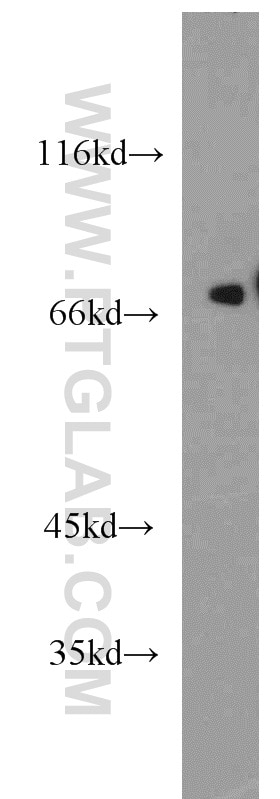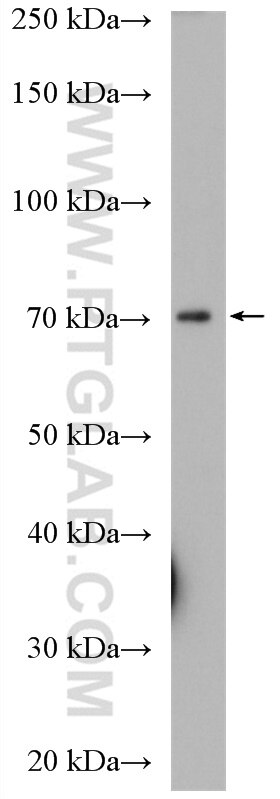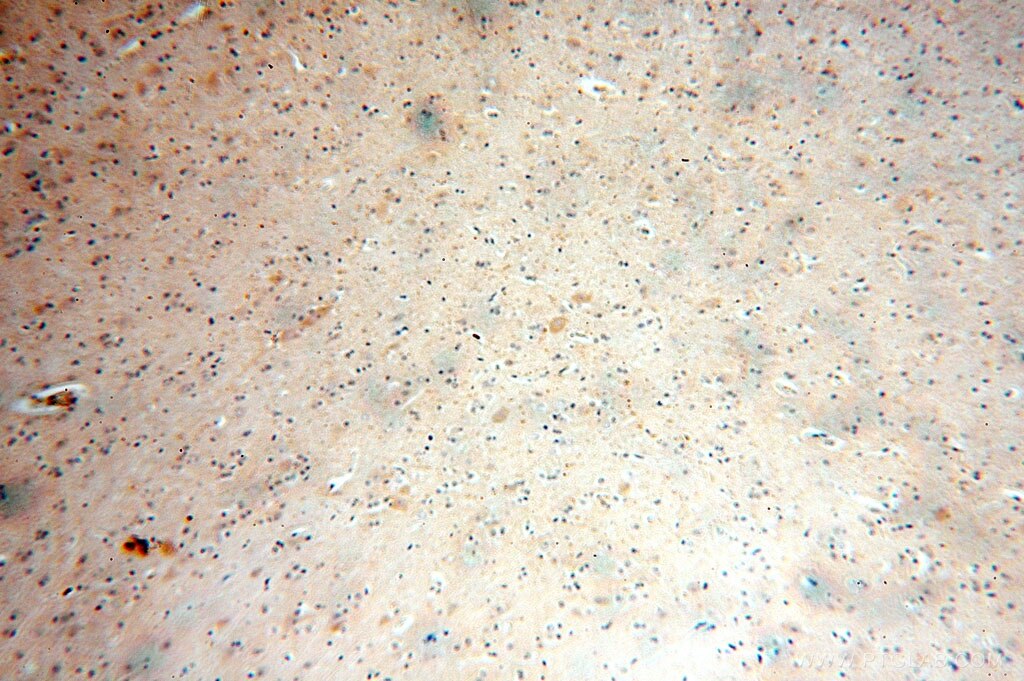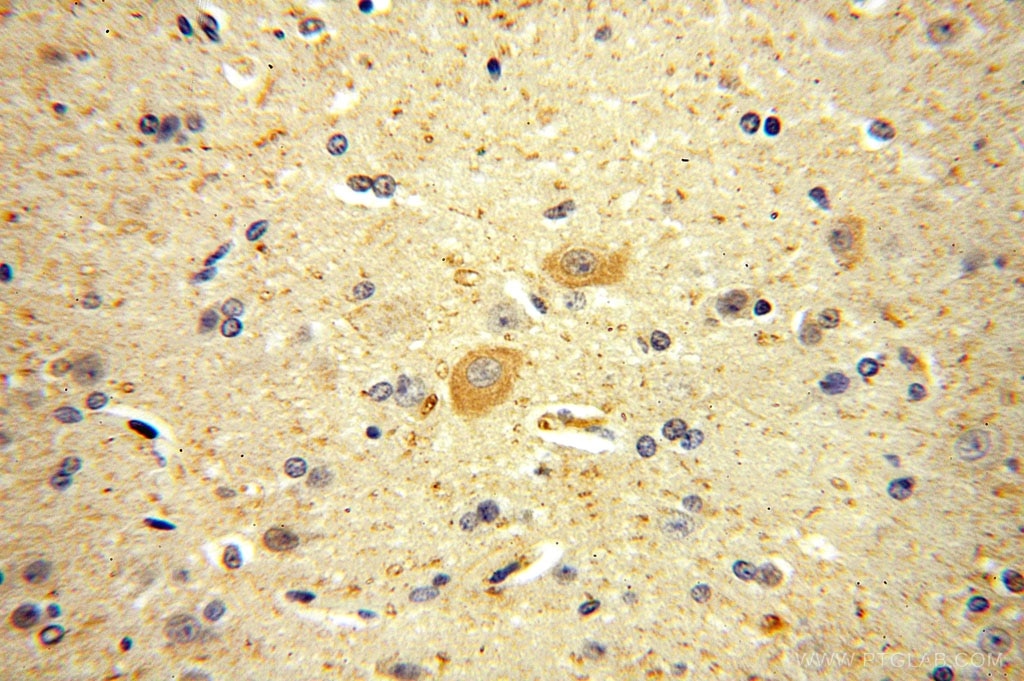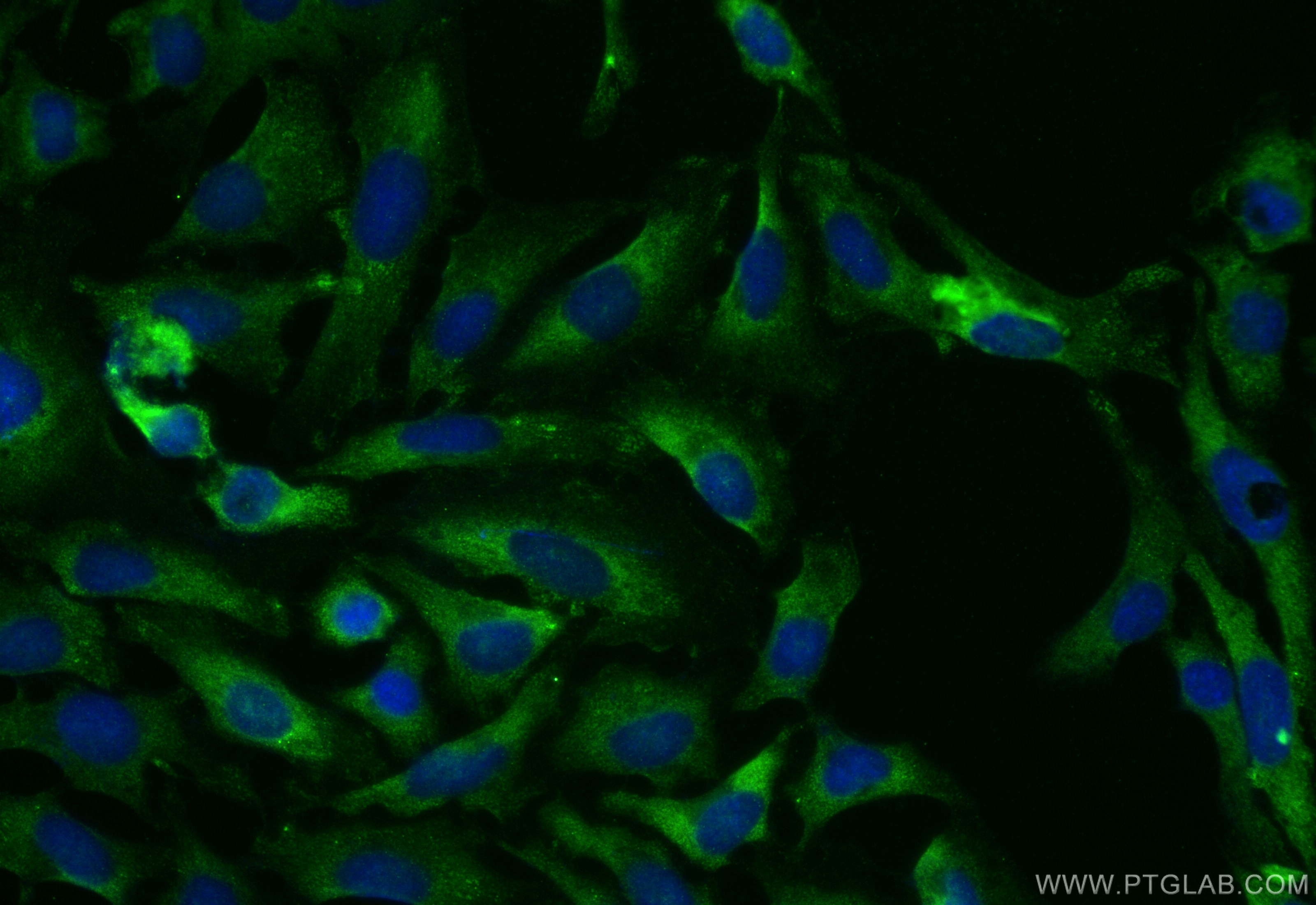Validation Data Gallery
Tested Applications
| Positive WB detected in | mouse heart tissue, Neuro-2a cells |
| Positive IHC detected in | human brain tissue Note: suggested antigen retrieval with TE buffer pH 9.0; (*) Alternatively, antigen retrieval may be performed with citrate buffer pH 6.0 |
| Positive IF/ICC detected in | HeLa cells |
Recommended dilution
| Application | Dilution |
|---|---|
| Western Blot (WB) | WB : 1:300-1:1500 |
| Immunohistochemistry (IHC) | IHC : 1:20-1:200 |
| Immunofluorescence (IF)/ICC | IF/ICC : 1:50-1:500 |
| It is recommended that this reagent should be titrated in each testing system to obtain optimal results. | |
| Sample-dependent, Check data in validation data gallery. | |
Product Information
14697-1-AP targets KCNAB1 in WB, IHC, IF/ICC, ELISA applications and shows reactivity with human, mouse, rat samples.
| Tested Reactivity | human, mouse, rat |
| Host / Isotype | Rabbit / IgG |
| Class | Polyclonal |
| Type | Antibody |
| Immunogen | KCNAB1 fusion protein Ag6339 相同性解析による交差性が予測される生物種 |
| Full Name | potassium voltage-gated channel, shaker-related subfamily, beta member 1 |
| Calculated molecular weight | 47 kDa |
| Observed molecular weight | 68 kDa |
| GenBank accession number | BC043166 |
| Gene Symbol | KCNAB1 |
| Gene ID (NCBI) | 7881 |
| RRID | AB_2131349 |
| Conjugate | Unconjugated |
| Form | Liquid |
| Purification Method | Antigen affinity purification |
| UNIPROT ID | Q14722 |
| Storage Buffer | PBS with 0.02% sodium azide and 50% glycerol , pH 7.3 |
| Storage Conditions | Store at -20°C. Stable for one year after shipment. Aliquoting is unnecessary for -20oC storage. |
Protocols
| Product Specific Protocols | |
|---|---|
| WB protocol for KCNAB1 antibody 14697-1-AP | Download protocol |
| IHC protocol for KCNAB1 antibody 14697-1-AP | Download protocol |
| IF protocol for KCNAB1 antibody 14697-1-AP | Download protocol |
| Standard Protocols | |
|---|---|
| Click here to view our Standard Protocols |
